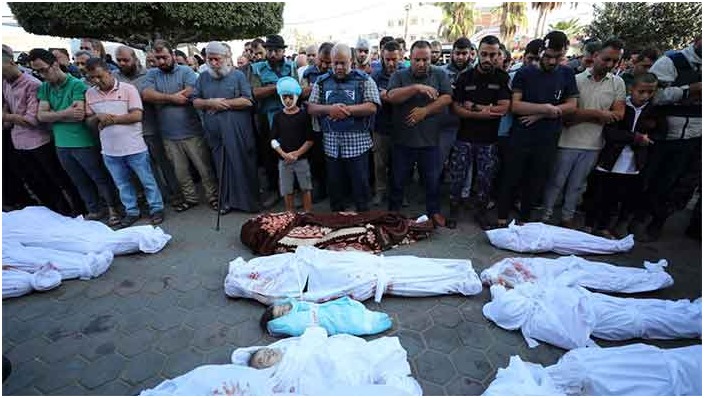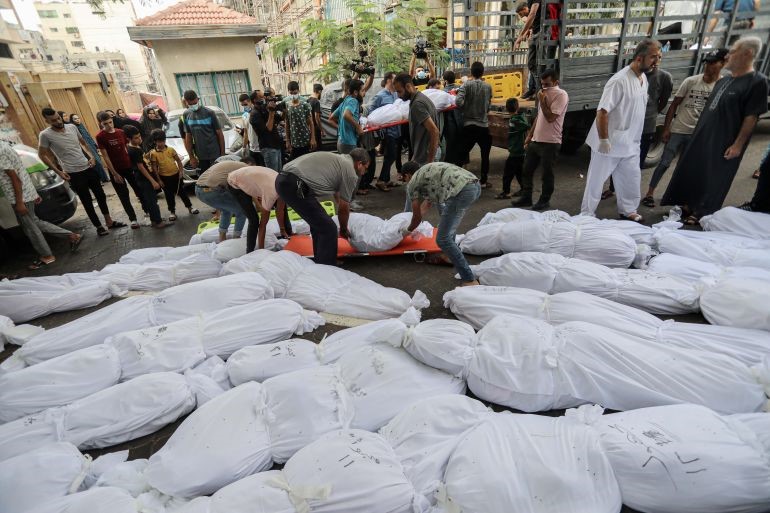NAXALITE INSURGENCY IN INDIA
0 comments | by Research by Mark Harper

Today, they remain one of the last formidable Maoist movements, having a formidable presence in 20 of India’s 28 states
They have been considered one of India’s most pressing threats, and the recent attack by the Naxalite that ambushed a convoy of the Congress Party went that much further. The ambush took place over the weekend in Sukma on the Maharashtra, Andra Pradesh and Chhattisgarh border. Reports suggest that there were as many as 200 Maoist rebels who inflicted heavy losses – 28 killed and 24 others wounded – before fleeing.
The attacks have shaken the establishment. Among the dead were four state party leaders including Mahendra Karma of Chhattisgarh, and five police officers. For BJP spokesperson Prakash Javadekar, “This new aggressive strategy of the Naxalite is a real threat to the Constitution and the rule of law. It is a challenge to sovereignty” (Times of India, May 26). Former police chief of Punjab state KPS Gill is pessimistic about the new surge – the government of the day did not “have the political will and bureaucratic and police set-up to prevent such attacks” (Dhaka Tribune, May 26).
Estimated to be 50,000 strong, the Naxalite have been waging a Maoist-inspired insurgency against the Indian government since the late 1960s. The group has been a strain on the country's security forces in the vast mineral rich region in eastern India known as the "Red Corridor." Today, the Naxalite heavily influence a third of the country, and India is no closer to eradicating the insurgency than it was 50 years ago.
The Naxalite impacted states are home to most of India's natural resources, where coal, iron, bauxite, manganese, nickel, and copper are found in abundance. Orissa and Jharkhand alone account for more than half of the country's coal reserves (coal is by far India's largest energy source). This makes the region strategically important for the country, yet Indian security forces have for decades been ineffectual as a fighting force in Naxalite territory. The depth of India's poverty, the vast expanse of rural land, and inadequate infrastructure in the Red Corridor have made it a difficult battleground, and the Naxalite have been able to attract new recruits on a regular basis.
Since many rebels are recruited among tribal villagers, they have a built-in advantage over the security forces. Whereas government forces outnumber the rebels and have greater resources at their disposal, they have frequently fallen prey to devastating attacks in remote areas. In May of this year 27 people, including high-level politicians, were killed when ambushed by more than 150 rebels in the state of Chhattisgarh -- a hotbed of Naxalite activity.
India is once again beating the drums of war with its neighbour but in reality India is at war with itself as well. It is no wonder then that a Maoist insurrection is spreading across India like an oil stain across paper, already affecting 14 of India’s 28 States (Chhattisgarh, Jharkhand, Uttar Pradesh, Asma, Uttaranchal, Kerala, Tamil Nadu, West Bengal, Gujarat, Andhra Pradesh, Madhya Pradesh, Orissa, Maharashtra and Bihar). In figures, that means the Maoists are in control in 165 districts out of the total of 602 into which the country is divided.
Prime Minister Singh recognized the Maoist advance when he declared solemnly to Parliament that the Maoists “have become the biggest internal challenge to security that India has.”
The Maoists say little when they carry out their actions. It is a fact that guerrilla control in this state is almost complete, with 10 of its 16 districts in their power and that their military actions are more and more daring, including attacks against officials, police, politicians and strategic economic and industrial targets.
The government’s aim is to confine the Maoist presence to that “red zone” and avoid it spreading with equal force to the rest of the country. Once that objective is achieved, repression will centre on what can be called “support bases” or liberated zones. Nonetheless, it is the different States that have responsibility for security matters, not central government, which explains why police implement the repression rather than the army, and there are different opinions about the best way to confront the guerrilla. In Andra Pradesh the tendency is to negotiate directly, while in Chhattisgarh the paramilitary phenomenon is used, to mention the most extreme examples. These positions are influenced by the role the moderate Left has in different State governments and even in the central government which would collapse without the Left’s support. This is the reason why timid agrarian reform is being advanced throughout India and which has as a pilot experience the one implemented in 2005 in the mother State of the guerrillas, West Bengal.
For the moment the guerrillas are ignoring the cities to focus on total control of the countryside, following the old strategy of surrounding the cities from the countryside. The strategy is to penetrate rural areas, consolidate in them and, once the bases of support are deemed secure, to go on building up effective and efficient links with different cells in other states. It is the classic strategy that has given such good results. The Indian Maoists respect local officials – including the police – if the people think they are honest and not compromised by cases of corruption or repression. They also respect businesses established in their zones of influence but they collect from them a “revolutionary tax”, which varies between 15% and 20 % of their profits, to fund their operations.
The intelligence services reckon that the People’s Guerrilla Army (the Indian Maoists military wing) last year counted on 8000 combatants, 25,000 militia members – protecting support bases, carrying out intelligence work and logistic support for the combatants – and 50,000 political members. Small numbers if one considers that India is a country with well over one Billion inhabitants. But the rapid development of the Maoist movement has set off alarm bells among India’s political elite. The misery of two thirds of India’s people and their social oppression counteract elite desires to turn India into a regional power via nuclear weapons and an agreement with the United States. Today the Naxalite are a reality that has to be taken into account. Perhaps westerners looking to India have been able to learn that “naxa” in the Indian vocabulary now means “rebel rural worker” and that the current and past struggles of the naxalite are part of modern Indian culture, even of its cinema.
The Indian government is puzzled by one fundamental problem that has become desperate to its own security. With its officials eyeing Pakistan and the funneling of terrorism through its borders, and the concern with international Jihadi movements, it has deliberately downplayed its own home grown revolts of Naxalite and Kashmir. Anywhere up to 60,000 people have perished in the Naxalite insurgency and the Indian Prime Minister Manmohan Singh has decided to place the Maoist movement’s threat to Indian security at the forefront of public and official debate
In the last few months an impressive guerrilla military campaign has begun in Chhattisgarh which has made the New Delhi government focus on this state leaving its plans for the other states in abeyance. The reason the guerrillas are prioritizing Chhattisgarh is that this state, along with Jharkhand, is turning into the spearhead of the government’s neoliberal policies following the signing of juicy, million-dollar contracts with big national and multinational industrial corporations, on steel, iron, coal and electricity, which presuppose a new wave of rural families in exodus to wretched slums in the cities. In fact, the most recent guerrilla attack was on June 3rd against the electricity plant of Narayanpur, a district of Chhattisgarh.
Truth has not merely been a casualty of this war, but a sure corpse, lying in state for all to witness it. Paramilitary forces have backed militias and classes who have been ruthless in perpetrating what Manmohan Singh admitted were grave acts of ‘social and economic abuse’. Atrocities are committed by all participating forces in this conflict. Martyrs are created in numbers, such as those of Kursam Lakhi and Sukki Modiyam of the village of Pedda Korma, raped and killed by the forces of the Salway Judum militia and their police counterparts (The Observer). The Naxal messages of land and wealth redistribution hold a natural attraction.
Chidambaram is confident that the insurgency will be put down in two or three years. This will be difficult, given the Naxalite rise from conventional guerrilla force to something approximating to an army. But the refusal to deal with a whole series of reforms, the continuing poverty in the North Eastern states and the perennial problem of ethnic conflict, will allow the Naxal flame to burn that much longer. Military force will simply perform its own dramatic role of obfuscation. The diplomatic tables will be left empty that much longer.
In Chhattisgarh, the Salwa Judum burned, raped and murdered its way through hundreds of forest villages, evacuating 600 villages, forcing 50,000 people to come out into police camps and 3,50,000 people to flee. The chief minister announced that those who did not come out of the forests would be considered to be ‘Maoist terrorists’. In this way, in parts of modern India, ploughing fields and sowing seed came to be defined as terrorist activity. Eventually, the Salwa Judum’s atrocities only succeeded in strengthening the resistance and swelling the ranks of the Maoist guerrilla army. In 2009, the government announced what it called Operation Green Hunt. Two lakh paramilitary troops were deployed across Chhattisgarh, Orissa, Jharkhand and West Bengal.
After three years of “low-intensity conflict” that has not managed to “flush” the rebels out of the forest, the central government has declared that it will deploy the Indian army and air force. In India, we don’t call this war. We call it “creating a good investment climate”. Thousands of soldiers have already moved in. A brigade headquarters and air bases are being readied. One of the biggest armies in the world is now preparing its Terms of Engagement to “defend” itself against the poorest, hungriest, most malnourished people in the world. We only await the declaration of the Armed Forces Special Powers Act (AFSPA), which will give the army legal immunity and the right to kill “on suspicion”. Going by the tens of thousands of unmarked graves and anonymous cremation pyres in Kashmir, Manipur and Nagaland, it has shown itself to be a very suspicious army indeed.
Who Attacked Indian Parliament
Over the years the meta narrative in India about origin of 2001 Parliament attack is filled with unidirectional flow of information that want us to believe that it was an operation planned from across the border (Pakistan) and executed by terror modules in India .But the recent revelation by a former CBI officers that this attack as also the 2008 infamous carnage in Mumbai was actually orchestrated by agencies to enable Government to strengthen the counter intelligence laws nails this lie.
Coming specifically to Parliament attack case, One needs to go through Nirmalalangshu Mukherji’s book “December 13-terror over democracy” to know the missing links & some vital unanswered questions in the Parliament attack case. After reading its chapter two titled “Who attacked Parliament” one is left with little doubt in concluding that it was a big covert operation orchestrated by Indian agencies. It is already in public domain as to how Afzal Guroo was made a sacrificial lamb after a farce investigation, an unfair trial and a perverse judgment. (A.M Zargar)





